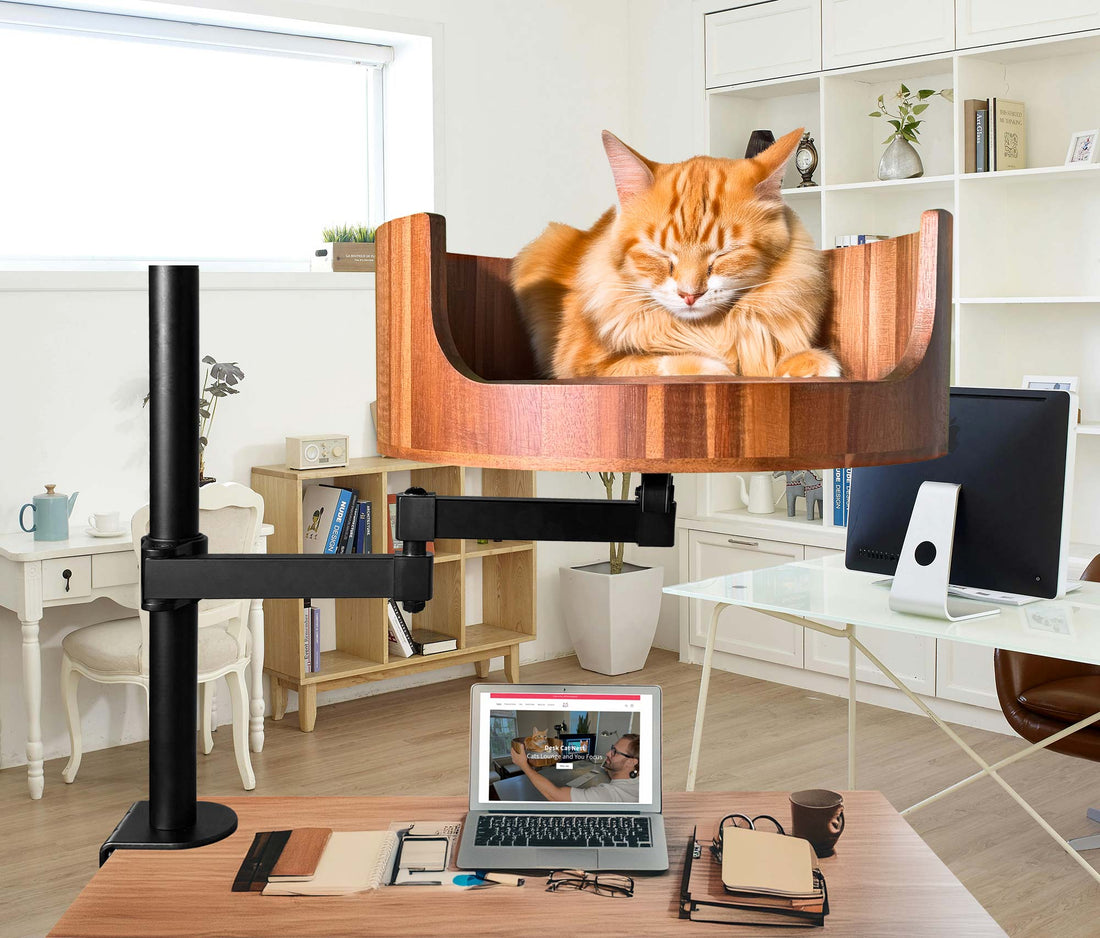
Vibrating Tail Cat: Understanding This Unique Behavior
Share
Have you ever noticed your cat wagging or vibrating its tail while lying down or resting? This unique behavior, known as the vibrating tail cat phenomenon, has puzzled cat owners and behaviorists alike for years. In this article, we will explore the reasons behind this intriguing behavior and delve into the possible explanations for why cats exhibit this peculiar trait.
The vibrating tail cat behavior is often seen in cats who are relaxed and content, typically when they are curled up in a familiar and comfortable environment, such as the Desk Cat Nest. While some may mistake this behavior for agitation or irritation, it is actually a sign of relaxation and comfort for many felines. Cats may vibrate their tails as a way to release excess energy or simply as a form of self-soothing. Throughout this article, we will delve into the various theories behind this behavior and shed light on why some cats exhibit this unique trait while others do not. Stay tuned to gain a better understanding of your feline friend's behavior and discover more about the intriguing world of cat communication.
1. Vibrating tail behavior in cats is a complex form of communication that can signal a range of emotions and intentions.
2. Understanding the context in which a cat exhibits vibrating tail behavior is crucial to interpreting its meaning accurately.
3. Factors such as body language, vocalizations, and environmental cues can provide clues to help decipher the message behind a vibrating tail.
4. Cat owners can deepen their bond with their feline companions by learning to recognize and appropriately respond to vibrating tail behavior.
5. While this behavior may seem puzzling at first, with patience and observation, cat owners can develop a better understanding of their cat's unique way of expressing themselves.
The Science Behind Vibrating Tail Behavior
The vibrating tail behavior in cats is a fascinating and complex phenomenon that can be attributed to a range of factors. Cats communicate through body language, and their tails play a crucial role in expressing their emotions and intentions. When a cat's tail vibrates, it can indicate a mix of excitement, anxiety, or anticipation. This behavior is often observed when a cat is hunting or playing, as well as when they are feeling threatened or in an unfamiliar environment. Understanding the science behind vibrating tail behavior can help cat owners decipher their pets' emotions and respond accordingly.
Causes of Vibrating Tail Behavior
There are several possible causes of vibrating tail behavior in cats, each with its own unique triggers and implications. In some cases, a cat may vibrate its tail as a way to release excess energy or as a precursor to pouncing on a target. Other times, the behavior may be a sign of stress or fear, indicating that the cat is feeling overwhelmed or threatened. It's essential for cat owners to pay attention to the context in which their cat exhibits vibrating tail behavior to determine the underlying cause and address any potential issues.
How to Respond to Vibrating Tail Behavior
When a cat displays vibrating tail behavior, it's essential for cat owners to respond appropriately to ensure their pet's well-being and comfort. If the behavior is triggered by excitement or playfulness, engaging in interactive play or providing a stimulating environment can help channel the cat's energy in a positive way. On the other hand, if the behavior is a response to stress or fear, creating a calm and safe space for the cat to retreat to can help alleviate their anxiety. It's crucial to observe and understand your cat's body language and cues to respond effectively to vibrating tail behavior.
Frequently Asked Questions
What is a vibrating tail cat?
A vibrating tail cat is a feline that exhibits behavior where their tail vibrates or twitches involuntarily. This can occur due to various reasons such as stress, excitement, or a medical issue.
How can the Desk Cat Nest help with a vibrating tail cat?
The Desk Cat Nest provides a cozy and secure space for your cat to relax and feel safe. This can help reduce stress and anxiety, which are common triggers for a vibrating tail in cats. The soft cushioning and enclosed design of the nest provide a comforting environment for your cat to calm down and unwind.
Is the Desk Cat Nest suitable for all cats?
While the Desk Cat Nest is designed to accommodate cats of all sizes, individual preferences may vary. Some cats may prefer open spaces or different types of bedding. It's best to observe your cat's behavior and preferences to determine if the Desk Cat Nest is the right fit for them.
Can the Desk Cat Nest cure a cat's vibrating tail?
The Desk Cat Nest is not a medical treatment or cure for a cat's vibrating tail. It can provide comfort and relaxation for your cat, which may help alleviate stress-related behaviors like tail vibrating. However, if your cat's vibrating tail persists or worsens, it's important to consult with a veterinarian to rule out any underlying health issues.
In conclusion, the Desk Cat Bed is a valuable choice for helping with a vibrating tail cat. The plush cushioning and cozy design of the bed provide a comfortable and secure space for your cat to relax and unwind, reducing stress and anxiety that may be causing the tail to vibrate. Additionally, the raised edges and enclosed structure of the bed create a sense of safety and privacy for your feline friend, promoting a sense of calm and relaxation. With the Desk Cat Bed, you can provide your vibrating tail cat with a soothing and supportive environment to help them feel more at ease and content.



















































